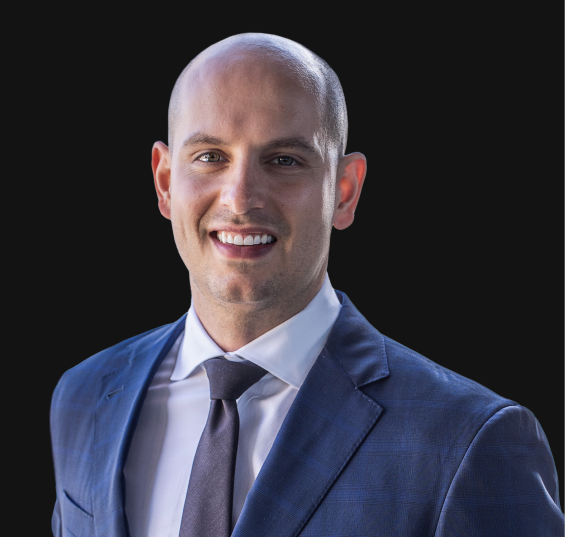Tax season is here, and for many Nike employees, that can mean added stress and an unnecessarily large tax bill. The good news is that there are many proactive strategies that can help reduce the sting of filing your tax return. If you’re worried about your tax bill this year, read on to learn more about our top 9 tax-planning strategies for Nike employees.
1. Maximize Your Retirement Plan Contributions
One of the best ways to minimize your tax liability is by maximizing your retirement plan contributions.
- Nike 401(k): This account allows for contributions up to $22,500 annually in 2023 ($30,000 if over age 50). You can choose to contribute on a pre-tax (traditional) or after-tax (Roth) basis, which provides a lot of flexibility in tax planning. Nike also offers a dollar-for-dollar match of up to 5% of your salary, making this an extremely attractive strategy for both retirement savings and tax minimization.
- Roth IRA: This is a great savings vehicle for many reasons, including no required minimum distributions (RMDs), tax-free withdrawals after age 59½, and the ability to pass wealth tax-free to your heirs. Unfortunately, Roth IRAs have income restrictions and you may not be able to open an account outright if you are above certain limits. This makes the ability to contribute to a Nike Roth 401(k) that much more appealing for those who want to avoid RMDs in retirement. Starting in 2024, Roth 401(k) accounts will no longer require RMDs.
2. Utilize Roth Conversions
If you are outside of the income eligibility threshold for Roth IRAs but still want to take advantage of the Roth tax benefits, a Roth conversion could be the right strategy for you. It works by paying the income tax on contributions to a traditional IRA, thereby converting the funds to a Roth IRA. This will allow the contributions to grow completely tax-free and allow you to avoid future RMDs, which is helpful if you expect to be in a higher tax bracket in the future.
Another option is the mega backdoor Roth strategy, in which you convert a portion of your 401(k) plan to Roth dollars. In this strategy, you would maximize your after-tax (non-Roth) contributions (up to $43,500 in 2023), then roll over this after-tax portion to the Roth 401(k) or your Roth IRA so these dollars can grow tax-free.
3. Understand Your Nike ESPP Contributions
The Nike Employee Stock Purchase Plan (ESPP) is a great executive compensation benefit that allows executives to purchase up to $25,000 in Nike stock at a 15% discount. This wealth-building tool can quickly turn into a tax nightmare if you’re not careful.
If you have ESPP benefits, make sure you keep track of two key dates:
- Start of the ESPP offering period
- Stock purchase date
If you hold on to the stock for at least 2 years from the offering period and 1 year from the purchase date, you will receive favorable tax treatment by being taxed at the long-term capital gains tax rate, which ranges from 0% to 20%. Most Nike employees would be taxed at the 20% rate due to their high income.
Understanding the tax implications of long-term versus short-term capital gains, and managing your ESPP accordingly, can go a long way in reducing your tax liability. For instance, in 2023 a single taxpayer will pay 0% capital gain tax on their long-term capital gains if their taxable income falls below $44,625. That rate jumps to 15% and 20% for taxable incomes that exceed $44,625 and $492,300, respectively, and gains that are short term in nature will be taxed at your marginal tax bracket, which could be up to 37%! Knowing both the nature of your gain, as well as your tax bracket, is crucial information if you want to minimize your tax liability.
4. Understand Your Equity Compensation
In addition to the ESPP, Nike offers two other equity compensation benefits:
- Stock options: Gives executives the right to purchase Nike stock at a set price (usually discounted) for a set period of time
- Restricted stock awards: Similar to a bonus that is paid out in shares of Nike stock instead of cash
There are many tax consequences that come with equity compensation. First and foremost, RSAs will be taxed as income in the year they vest. This can result in a huge tax bill at the end of the year if you don’t plan ahead for the increased income. If you know you have a large amount of RSAs on the vesting horizon, consider deferring other sources of income to avoid paying a larger-than-necessary tax bill.
Additionally, both stock options and RSAs will be subject to capital gains if the value of the stock increased after vesting. Qualifying for long-term capital gains rates should be the top priority for Nike employees to avoid being taxed at the highest marginal tax bracket (37%).
5. Contribute to a Donor-Advised Fund
If you itemize your tax deductions because of charitable contributions, you may want to consider investing in a donor-advised fund (DAF). You can contribute a lump sum all at once and then distribute those funds to various charities over several years. With this strategy, you can itemize deductions when you make the initial contribution and then take the standard deduction in the following years, allowing you to make the most out of your donation tax-wise.
You can also donate appreciated stock, which can further maximize your tax savings. By donating the appreciated position, you avoid paying the capital gain tax that would have been due upon the sale of the stock. If you want to keep the position for the long term and avoid the capital gain tax, you can donate the stock and then repurchase it using the cash you would have otherwise contributed. This effectively resets your cost basis to the current price of the stock and allows you to delay taxes until the future.
Not only is a DAF great on its own, but it can also be combined with Nike’s Give Your Best Charity Program, which matches up to $25,000 of charitable donations made from donor-advised funds.
6. Harvest Capital Losses
Tax-loss harvesting involves selling investments at a loss in order to offset the gains in your portfolio. By realizing a capital loss, you are able to counterbalance the taxes owed on capital gains. The investments that are sold are usually replaced with similar securities in order to maintain the desired asset allocation and expected return.
Tax-loss harvesting can also be used to offset your ordinary income tax liability if capital losses exceed capital gains. In this case, up to $3,000 can be deducted from your income, and capital losses in excess of this amount can be carried forward to later tax years.
With the volatility of the past year, tax-loss harvesting can be a great way to use investment losses to your advantage.
7. Consider Deferred Compensation
Deferred compensation allows a portion of current earnings to be delayed until a later date (typically retirement) in order to avoid taxation in the current year. Since they have no contribution limits, they are especially attractive to executives and high-earning employees, particularly if they anticipate being in a lower tax bracket in retirement.
Nike’s Deferred Compensation Program is a great way for executives to build tax-deferred savings outside of a traditional 401(k). You can invest money for growth during deferral years, then pay taxes when you start taking withdrawals.
Employees who make more than the annual compensation limit of $330,000 in 2023 also qualify for profit-sharing catch-up contributions into the deferred compensation plan.
8. Make Sure Your Advisory Team Is Working Together
Beyond consulting with a tax professional, you’ll want to be sure your entire financial team is working together to provide cohesive oversight and guidance. This should include professionals like CPAs, financial advisors, investment advisors, and estate attorneys. Your finances don’t exist in a bubble and so neither will your tax-minimization strategies. When your advisory team works together, strategies are easier to identify and execute, and proactive tax solutions become much easier to implement, reducing stress and your tax bill.
How We Can Help
At JGP Wealth Management, we have the tools and expertise to help Nike employees navigate these tax-planning strategies and more. If you have questions about your executive compensation package, or would like a second opinion on your current tax plan, please reach out to us today! Call 503-446-6450, email [email protected], or schedule an introductory phone call online.






